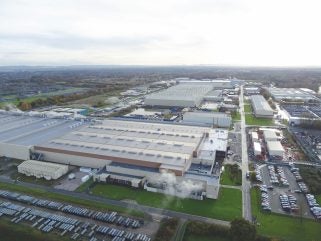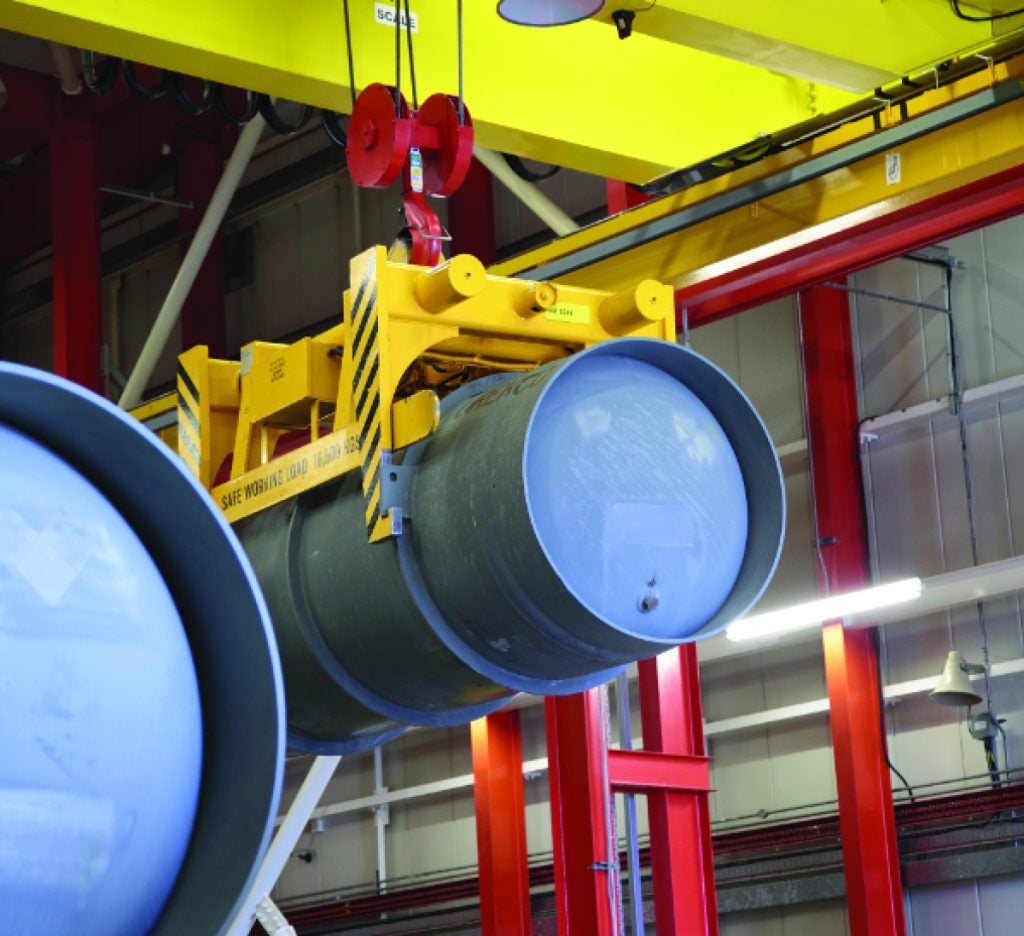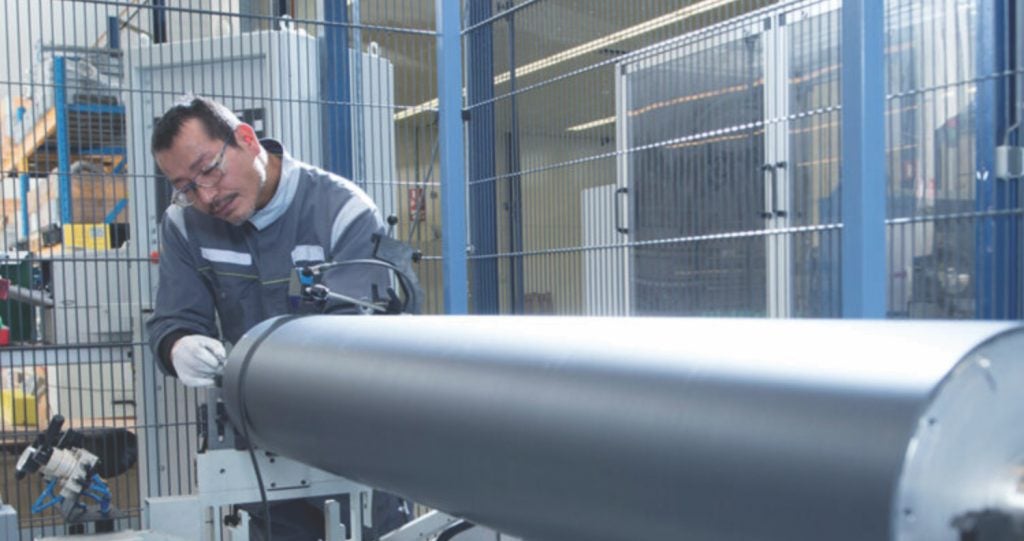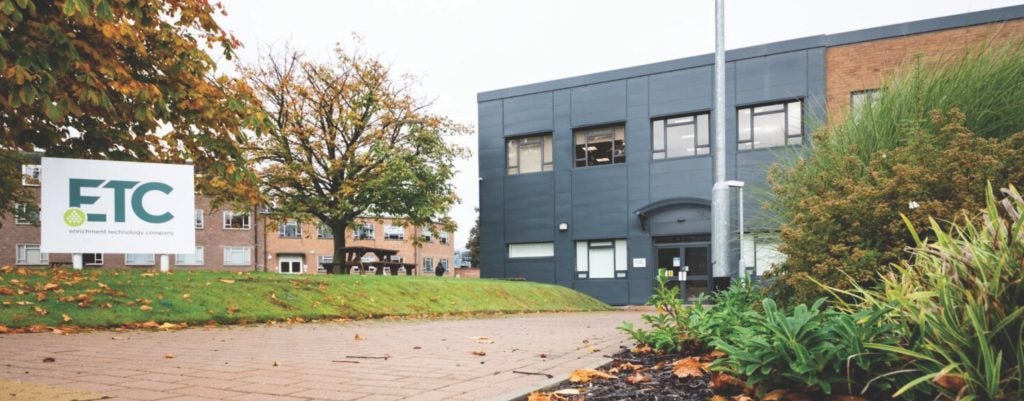
In January this year the UK government announced a £300m (US$393m) funding programme to develop a High Assay Low Enriched Uranium (HALEU) industry as part of the Department of Energy Security and Net Zero’s ambitions to accelerate the development of a civil HALEU commercial market and, in-turn, support the roll-out of next generation nuclear power plants. In May a substantial proportion, £196m (US$257m) of the total funding was earmarked for an advanced fuels facility currently under construction at Urenco’s Capenhurst enrichment site in the northwest of England.
Drivers for advanced fuel demand
While HALEU, which is enriched between 10% and up to 20% uranium 235, offers the prospects of advanced fuels for the next generation of reactor designs, notably advanced reactors, the move is also a strategic one by the UK government. Once the enrichment facility is complete the UK will be the first European nation to produce advanced nuclear fuel on a commercial scale. This is a market currently dominated by Russia and in a statement announcing the funding the government explicitly stated the move is part of the government plan to push Russia and its president Putin out of the global energy market while boosting energy security for the UK.

However, Magnus Mori, Urenco’s Head of Market Development and Technical Sales, explains why this is just part of the drive behind development of the facility: “It’s not really Urenco’s decision, it’s the reactor developers, it’s the drive to net zero, there’s some very distinct imperatives here. One is about security of supply of energy in general and one is also about diversifying that supply of energy and the market trend or how the energy market is evolving.”
Mori also points to the next generation of reactor technologies as an obvious and substantial future market for HALEU products, saying “We see that there’s a huge interest in more nuclear, both traditional light water reactors but also with Generation IV reactors, the promise of in-factory, modular construction, smaller scale, less capital expenditure, inherent safety, better economics and the promise of more efficient fuel. Hence advanced fuels. It is too good not to be explored further and therefore we see all the global initiatives in this area in the UK and elsewhere, with GBN [Great British Nuclear] just one initiative.”
Although HALEU will be needed to fuel advanced reactor designs, Mori also notes the role of HALEU in developing fuels that are part of the overall philosophy that is related to new nuclear and advanced reactors in general. “The engineering function of the fuel is much more complex than in the fuel used in traditional nuclear reactors. In a pressurised water reactor with standard fuel a lot of the safety and reliability functions to deliver electricity are met by engineered systems that are built around and in the reactor. With Generation 4 designs, a lot of the engineering features are actually inherent to the fuel,” he says.
HALEU products are not just more sophisticated in terms of their safety function, they also offer greater energy densities when compared with conventional light water reactor fuels. Says Mori: “It is more efficient because of higher enrichment. If you compare standard pressurised water reactor fuel, which is enriched up to 5%, to HALEU fuel, the new fuel designs should deliver five or even, theoretically, up to seven times more energy per kilogram than standard fuel. It means that per kilogram of fuel you have less spent fuel and so therefore it makes the whole cycle more economical and more efficient.”
He says: “We are now starting to advance the design and then build the facility to deliver advanced fuels for the development of these smaller, simpler reactors that can operate longer and more efficiently.”
Establishing a new safety case and a new facility
Given the enrichment of HALEU it requires different safeguards, security and safety arrangements and there’s more oversight. For that reason, the new plant will be entirely separate from the existing facilities at Capenhurst, despite the fact that they are effectively co-located.
“Even though we’re going to use exactly the same machinery we’re using today to enrich uranium, we need to build a dedicated facility,” explains Mori, adding: “Because there’s more controls and because the safety case is effectively going to be different there is the need to build a new facility and thus for significant investment.”
The extra requirements cover multiple aspects of the HALEU enrichment process and stem back to international standards established decades ago by the IAEA and these general principles don’t really change although the details of their implementation do, as Mori explains: “Where you have more enrichment you need to redo your calculations to prove to the regulator that under the new framework that the safety case is still sound. We also have a very strict material control and accountancy that applies to all of our enriched products and to all the uranics that we have at our sites. The same applies to HALEU. However, the level of detail is even higher and the reporting is even stricter. That’s part of the process to isolate these functions into a dedicated facility.”
Indeed, a wholly separate facility is needed and not just because of the increased reporting requirements, even though nuclear enrichment is already a heavily regulated industry. Mori explains: “Although this is known technology and there’s no research and development needed, it is a totally new plant so we’ll have special sampling systems, new labs, new maintenance areas and so on. It’s a complete standalone with its own testing facilities not sharing anything with the existing facilities. That’s a requirement because, if you imagine taking a pump out of the plant, it will have residues of HALEU in it so it can’t be taken outside of the HALEU fence. It will be part of the safety case to be inspected or maintained within the HALEU facility. We don’t want to have slightly below 20% enriched material to be mixed with standard deliveries We want to make sure that everything is managed properly and that there’s no opportunity to have higher enriched material where it’s not supposed to be. Even the chemistry services will be performed within the HALEU island. All the logistics within the plant and the interfaces with the current plant also need to be addressed”.
Furthermore, the facility is being built with future enlargement in mind. “If we take the nominal enrichment level of 19.75% enrichment, the nominal capacity for one cascade is about 10 tonnes a year. There is inherent flexibility and the plant is designed to host two cascades if there’s enough demand. We can double the capacity very, very easily. All the infrastructure is being designed for two cascades,” states Mori.

Considering the level of preparation needed the plant is still in the earliest phases of development with the Front End Engineering and Design (FEED) process just about to begin. Nonetheless, substantial progress has been made since the project was publicly revealed in May 2024. “We have the conceptual design done and we have identified the area in Capenhurst where it’s going to be built. A new fence has been installed that actually shows the perimeter of the plant. Physically, we’re doing ground testing and sampling and preparing the site characterisation. We are initiating enabling works, things like utilities, new transformer switch yards and we have also some old utilities that need to be moved. We’re finishing the enabling works as Capenhurst is a legacy site so there are a few things that need to be moved around. Then it also has to go into the detailed design phase, that cannot be underestimated, and then execution. The project team has been appointed and it’s in place. Reporting to government will begin in September. It’s all full steam ahead,” says Mori, noting that some contractors are already in place, such as the Enrichment Technology Company, a Urenco-Orano joint venture which physically designs and builds the centrifuge cascades. “There’s some significant preparatory work that needs to happen. The current estimate, as announced by the UK government earlier, is early 2030s. I think that all things considered six to seven years from now [for commissioning] is not bad.”
Broadly similar to existing enrichment technology operating at the Capenhurst site, Mori is keen to point out that the new facility will use the latest and best technology available. “We never stop developing or refining our technology with all the fine-tuning based on lessons learned over 54 years of enriching. The centrifuges themselves won’t be very different from what we currently are operating in Capenhurst so we know them very well.”

Even so, although it is using existing technology and it’s a small plant – much smaller than the current facility because the quantities are also much smaller – the HALEU plant represents a substantial investment. Mori explains: “It costs so much because it’s not just centrifuges, it’s a totally new, almost a standalone plant. Where we benefit though is, of course, from operations. We have experienced operators, we have experienced maintenance staff, we have all the chemistry personnel from the existing site. We do benefit from all the infrastructure that we have at site already, not just in terms of know-how, but also access to the site and the utilities that I mentioned.”
But, as the market for HALEU is currently small and underdeveloped, government support is needed to establish an investment case. As Mori points out: “Because there isn’t really a developed market, the role of government to incentivise private investment in this is fundamental. We’ve seen it in the UK as first movers, we’re seeing it in the US where discussions started three years ago with the first draft, the first expression of interest and then the HALEU RFP itself earlier this year. Governments have recognised that and the UK acted really quickly.” Even alongside the £196 m (US$257m) investment from central government, there’s a significant though undisclosed investment commitment from Urenco too. “The UK government is supporting this because there is a strong belief that there will be a market that will not only create jobs in the UK during design and construction, but also create benefit and revenue in the future as the facility will start supplying enrichment services to the world,” says Mori.
Indeed, the UK government’s total commitment to support development of a HALEU supply chain stretches to £300m (US$393m) with a large proportion going to enrichment but a significant sum also devoted to a competition for HALEU deconversion services that will convert HALEU in as UF6 into either an oxide or metal. In addition, funds are also being allocated for regulatory resources and transportation and logistics.
Under the deconversion competition, grant funding of up to £70m (US$92m) is available to support the design and development of a commercial-scale oxide HALEU deconversion facility and a commercial-scale metal HALEU deconversion facility in the UK. Initially the facility will have the capacity to process at least 10,000 kgU a year but should be designed to allow for expansion up to at least 30,000 kgU a year. Industry co-funding will be required at a minimum rate 30% with the deconversion facility to be operational by 2031, coinciding with the enrichment plant.
Market prospects
While much of the market for HALEU products is anticipated to emerge after 2030 as advanced reactors are deployed, Mori emphasises that a relatively small market nonetheless already exists for HALEU: “We’re expecting a substantial HALEU market to emerge over the following decade or so into the 2030s when people expect the advanced reactors to come online but we shouldn’t forget the role that advanced fuels play today.”
He explains: “Estimates are that currently research and test reactors in the Western world use about four to six tonnes of HALEU per year, that’s existing demand, and then there’s a few hundred kilos that are needed for the production of medical isotopes. It’s also HALEU-based.”
Urenco is not currently involved in producing HALEU fuel as that is dependent on the new HALEU enrichment plant coming online, however, Mori does point out how important the HALEU market is even today: “If you think about the UK, Europe, the Western world, but also globally, there is an existing market that is being serviced, supplied by stockpiles. It’s a market that may not be very big, but it’s an extremely important market because it delivers fundamental research and medical needs. It informs some of the fuel designs, for instance metal fuel designs, that are currently used for research reactors.”
And, although the HALEU plant at Capenhurst is still in early-stage development its existence is globally significant. As Mori says: “This is not just a first for Europe. Right now there is one HALEU enrichment plant in the United States, which has a nameplate capacity of 900 kilos per year, which is obviously not commercial in nature so the facility in Capenhurst promises to be the first commercial-scale plant outside Russia globally.”
There is a Request for Proposals (RFP) currently running in the US that is aimed at stimulating the construction and operation of a commercial HALEU fuel supply chain including enrichment and deconversion but so far, no award has been made, putting Capenhurst in pole position: “We’re pretty confident that we’re going to be first,” says Mori.
He is also keen to point out the opportunities for market growth beyond the UK, saying: “It’s very clear that first movers are in the United States and there’s a lot of interest in Canada so that is one of the markets that we’ll want to supply first in addition to any research and test reactor needs. Euratom has identified minimum requirements for the research and test reactors that are currently under ESA’s supervision and that’s about one tonne of HALEU per year, including medical isotopes. So that is also another potential market to be supplied from the UK and then there’s all the UK interest and activities in the AMR space that we’re monitoring very closely.”
Urenco is participating in the US DOE’s HALEU RFP and is eagerly awaiting potential announcements there, as well as also engaging with the European Union side and the SMR Alliance on feasibility studies for HALEU. Says Mori: “The UK is our primary focus and we have an investment decision there, but we’re not forgetting the US and the European Union as potential opportunities.” Indeed, since the UK announcement he notes there’s already been an uptick of interest in HALEU. “Some initial discussions have moved on to actual offers and negotiations, but nothing has been signed yet,” he says.
With massive increases in electricity demand anticipated over the coming decades, , and the wider reach of advanced nuclear into providing process heat and electricity for industry, advanced reactors are expected to supply a substantial chunk of future nuclear development. In creating the fuel needed to power those reactors the UK has clearly secured a first-mover advantage.






